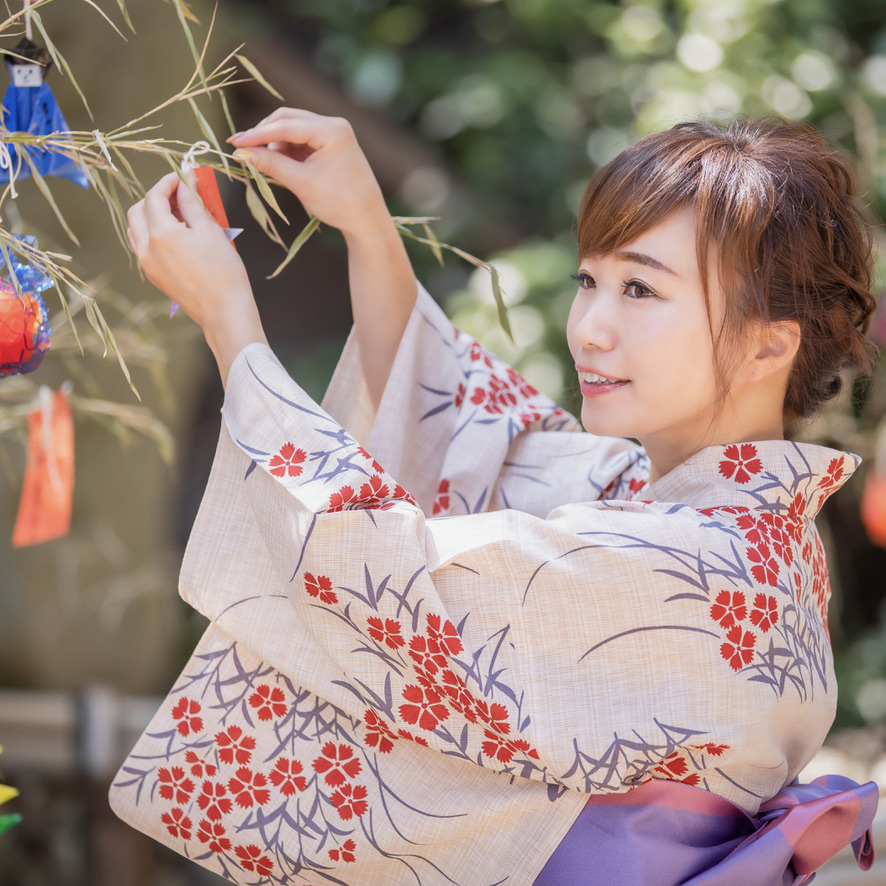【Tanabata 🎋🌠 7th July】
Tanabata is the night of July 7 when Orihime and Hikoboshi cross the Milky Way and meet only once a year. Write your wishes on strips of paper and decorate them with bamboo.
It is said that the Milky Way cannot be crossed when it rains, so many people must hang teru teru bozu.
●The history and origin of Tanabata
The story of Tanabata is based on ancient Chinese folklore. Orihime and Hikoboshi are Chinese-style shokujo and kengyu. By the way, South Korea and Vietnam also have event of Tanabata.
In Japan, it was introduced as a court ceremony in the Nara period, and Orihime was a hard worker who was good at weaving. The prototype of making a wish upon a star begins here.
●The legend of Orihime and Hikoboshi
Orihime, the daughter of the heavenly emperor (God), is a hard-working woman who is good at weaving. Tentei introduced him to Kengyu, who was also a hard worker and a cowherd. The two fell in love at first sight and got married.
However, when they got married, they were just playing around and stopped working. Tentei decided to separate them on opposite sides of the Milky Way, but Orihime cried and was saddened, so she only allowed them to meet once a year on the night of Tanabata.
●The meaning of Tanabata decorations
Tanabata decorations that hang colorful strips of paper and various shapes of decorations on bamboo. In the olden days, it was believed that the higher the star, the more your wish would reach, so it seems that it was hung up to the top of the roof.
●Tanabata food
Somen noodles are not well known as a Tanabata event food.
There is a theory that it is eaten like the Milky Way, but there are various theories. Chirashi sushi is also popular!
How about writing strips of paper and decorating them, looking at the night sky, eating delicious food and relaxing?
【七夕 7月7日 】
七夕とは、織姫(おりひめ)さまと彦星(ひこぼし)さまが天の川を渡って、1年に1度だけ出会える7月7日の夜のこと。短冊に願い事を書いて、笹竹に飾り付けます。
「雨が降ると天の川が渡れない」ともいわれて、てるてる坊主をつるした人も多いのではないでしょうか。
●七夕の歴史・由来
七夕のお話は、中国古代の民間伝承がもとになっています。織姫と彦星は、中国風だと織女(しょくじょ)、牽牛(けんぎゅう)。ちなみに韓国やベトナムにも七夕があります。
日本には、奈良時代に宮中儀式として伝わり、織姫が機(はた)織りの上手な働き者だった…という内容から、手芸や裁縫の上達を願う風習につながりました。星に願い事をする原型はここから始まっています。
●織姫と彦星の伝説
天帝(神様)の娘である織女は、機織りが上手で働き者の女性。天帝は、同じく働き者で牛飼いの牽牛と引き合わせました。二人はひと目で恋に落ち、結婚しました。
ところが結婚すると遊んでばかりで、働かなくなるという結果に。怒った天帝は二人を天の川の両岸に引き離しましたが、織女が泣いて悲しんだため、年に1度、七夕の夜にだけ会うことを許すようになった…というあらすじです。
●七夕飾りの意味
色とりどりの短冊や、いろんな形の飾りを笹竹に吊す七夕飾り。昔は高ければ高いほど星に願いが届くと考えられ、屋根の上まで高くかかげていたようですよ。
●七夕の食べ物
七夕の行事食としてあまりよく知られていないのが、そうめんです。
「天の川に見立てて食べる」という説もありますが、諸説あり。ちらし寿司も人気ですよね!
短冊を書いて飾りつけたり、夜空をみてみたり、美味しいものを食べてゆっくり過ごしてみては?

